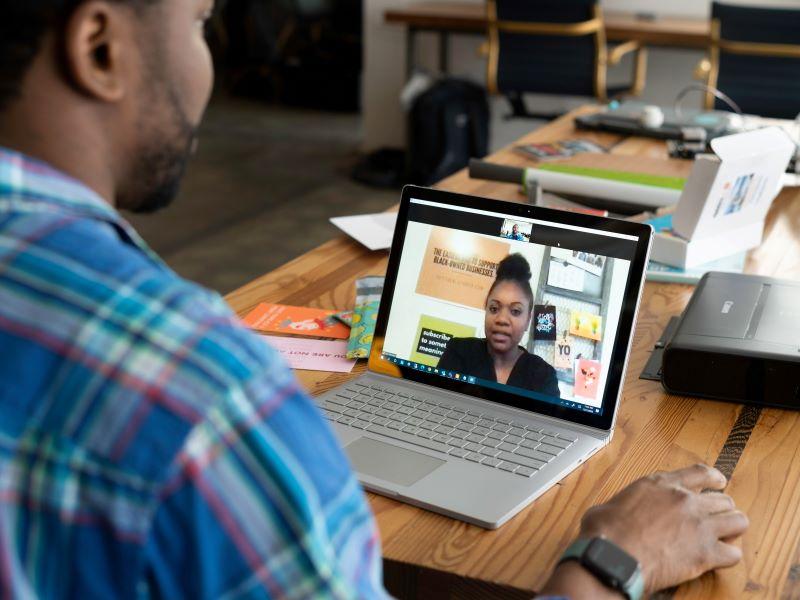Recently, I was providing some edits on educational developer Flower Darby’s upcoming book, The Spark of Online Learning, and a passage on establishing high contact with your online students gave me a solid moment of pause.
She argued that students who take online classes tend to be students who have non-traditional working hours. An answer to a query on a Sunday evening might mean the difference between a student being stuck on a problem right before a precious block of classwork time and being able to blast through several assessments between shifts doing maintenance work at the local hospital or when their child is with their other parent for the weekend. She advises that when teaching online, it is important to keep lag time between queries and responses short – even more important than in face-to-face classes.
This is not the moment that gave me pause, as it is both logical and empathetic.
The moment that did give me pause was the anecdote she used to illustrate this point. Flower shared that she set aside four hours in the middle of every Saturday to take student calls to her direct line. One day, a call came through while she was in the middle of prepping her daughter’s birthday party, and so she multitasked chopping carrots for a veggie platter while answering the student’s questions.
Here, Flower is trading some of her own family time to benefit her student. If you take this moment and multiply it across how many students you have, it is easy to see how your job can quickly spill into every moment of your life if you’re being highly responsive. You’ll be monitoring and responding to messages in the early mornings, in the evenings and, indeed, during your daughter’s birthday party.
How can we be student-centered online instructors while preserving spaces for our own downtime? I think we have to approach being high-touch in a bit of a calculated way, taking some inspiration from the productivity techniques and messaging apps favoured by the business world.
Here are three such approaches:
Schedule touchpoints. My favourite productivity system is Getting Things Done by business guru David Allen. He argues that when your brain does not trust your system of keeping track of to-dos and next actions, it spins endlessly in loops. He has you develop a trusted system with clear demarcations for times for working on certain tasks, for scanning your projects for new or remaining to-dos, and for tracking progress.
I suggest taking a similar approach to your responsivity to students. Do not check messages throughout the day, every day, never being able to relax. Do block off times in your schedule to check and respond to messages. Do hold yourself to these, and do clearly communicate those times to your students so that they know that you will be getting back to them promptly, but also not to expect an immediate response.
Consistent with Flower’s points, it is wise to schedule some of these times on the weekend. But if you do, I suggest scheduling an equal amount of time during the workweek for a CrossFit class or lunch with a friend.
Pre-schedule frequent engagement. Some touchpoints between students and instructors are student-initiated, in the form of questions and requests for assistance. But many are instructor-initiated – videos of you highlighting the topics and assignments for the week ahead, reminders that the weekly quiz is due by Wednesday at midnight, or sharing a news item related to a topic discussed in class.
Your email programme and your learning management system (LMS) likely both have the capacity for scheduling messages and releasing posts at certain times. You can block off a period of time to prepare contact points for the entire week ahead, scheduling messages and posts so that they are peppered throughout the week – even though you and I know that they were generated in a scheduled binge session a week ago when you had some breathing room.
Make high-touch a communal responsibility. Last spring I taught a seminar class, and rather than relying on the LMS, I moved us all on to the group messaging app Slack. There we critiqued and debated research articles, the students shared their progress on completing their term papers, and we joked around on a thread for “neuroscience memes”.
Two other threads proved instrumental. One I called “questions for prof cavs”, and one I called “questions for each other”. These threads reduced my cognitive load while maintaining high-touch in two different ways. First, students would sometimes crowdsource their questions. Second, while students would often still email me or visit me in office hours rather than post their question on Slack, afterward I would post in Slack a little narrative of the question and my answer (“one student had a question about…”).
These posts both reduced the number of emails I would get with the same question, and presumably answered questions that other students had in their minds but which they didn’t feel comfortable asking. Answering questions “out loud” in this way may also result in more equitable experiences of the class across students.
In conclusion, we want to be student-centered instructors, but not at the expense of our own well-being. Strategising how to be a high-touch instructor can go a long way towards maximising both the student and the instructor experience of the course.
Sarah Rose Cavanagh is an associate professor of psychology and neuroscience at Assumption University, where she is also the associate director of the D’Amour Center for Teaching Excellence. She is author of The Spark of Learning and Hivemind.




comment